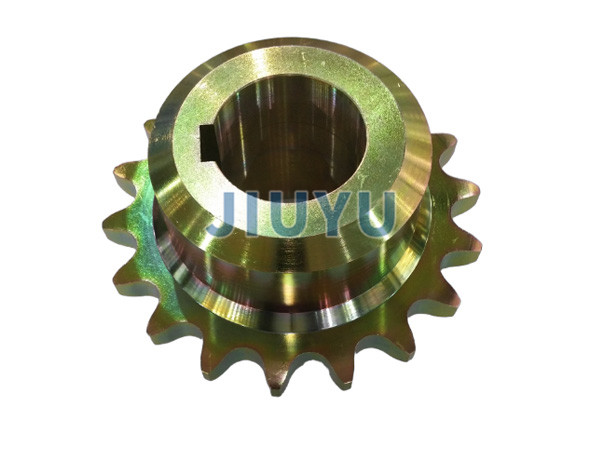
Regarding other aspects of gears:
Characteristics of gear transmission
Advantages
Good transmission efficiency: In commonly used mechanical transmissions, the efficiency of gear transmission is relatively high, generally reaching 90% -90%.
. This is because during gear meshing, the friction loss between the tooth surfaces is relatively small, which can effectively transmit power from the driving shaft to the driven shaft Accurate transmission ratio: The transmission ratio of gear transmission depends on the tooth ratio of the gears. As long as the manufacturing and installation accuracy of the gears are well protected, accurate and stable transmission ratios can be obtained. This makes gear transmission widely used in situations that require accurate transmission ratios, such as machine tools, clocks, etc Excellent performance and long lifespan: The gear transmission structure is compact, with high strength of the teeth, and can withstand large loads. Under normal use and maintenance conditions, gear transmission can work stably for a long time and has a long service life Wide applicability: Gear transmission can be used to transmit various types of motion and power, including transmission between parallel axes, intersecting axes, and staggered axes. At the same time, it can adapt to different working environments and working conditions, such as high temperature, low temperature, humidity, etcDisadvantages
High precision requirements for manufacturing and installation: In order to protect the accuracy and performance of gear transmission, the manufacturing of gears requires high precision and strict requirements for processing equipment and processes.
. At the same time, the installation of gears also requires accurate adjustment, otherwise it will affect the transmission quality, produce noise, vibration and other problems High cost: Due to the complex manufacturing process of gears, specialized processing equipment and cutting tools are required, and the requirements for materials are also high, so the manufacturing cost of gears is relatively high. In addition, the detection and debugging of gears with suitable accuracy also require a determined cost investment Not suitable for long-distance transmission: Gear transmission is generally suitable for transmission where the distance between two shafts is close. If the distance between two shafts is far, multi-stage gear transmission or other transmission methods need to be used to achieve it, otherwise the structure of the gear transmission device will become large and complexFailure modes of gears
Tooth breakage: This is one of the common failure modes of gears, mainly due to the high bending stress at the tooth root when transmitting loads. When the stress exceeds the material's fatigue or yield strength, the tooth will break.
. Gear tooth fracture can be divided into two types: fatigue fracture and overload fracture Tooth surface wear: In the process of gear transmission, there is relative sliding and friction between the tooth surfaces, and over time, the tooth surfaces will gradually wear out. Wear on the tooth surface can lead to a decrease in tooth thickness, affecting the transmission accuracy and load-bearing capacity of the gear. The main causes of wear include abrasive wear, adhesive wear, corrosive wear, etc Tooth surface pitting: During the meshing process of gears, the tooth surface is subjected to cyclic contact stress. Under the repeated action of contact stress, small fatigue cracks will appear on the tooth surface. As the cracks propagate and connect, pitting like pits will form on the tooth surface, which is called tooth surface pitting corrosion. Pitting corrosion usually occurs near the tooth surface pitch line, which reduces the contact strength of the tooth surface and affects the transmission performance of the gear Tooth surface bonding: In high-speed and heavy-duty gear transmission, the pressure and temperature between the tooth surfaces are high, causing the lubricating oil film to break and the tooth surface metal to directly contact and adhere to each other. When the two tooth surfaces slide relative to each other, it can cause the tooth surface metal to be torn off, and this phenomenon is called tooth surface bonding. Adhesive bonding on the tooth surface can seriously damage the smoothness and accuracy of the tooth surface, causing the gear to lose its normal transmission capacity Plastic deformation: Under heavy load, the tooth surface material undergoes plastic flow due to yielding, resulting in a change in the shape of the tooth surface. This form of failure is called plastic deformation. Plastic deformation usually occurs on soft tooth surface gears, which can deteriorate the tooth profile and meshing performance of the gears, affecting transmission accuracy


